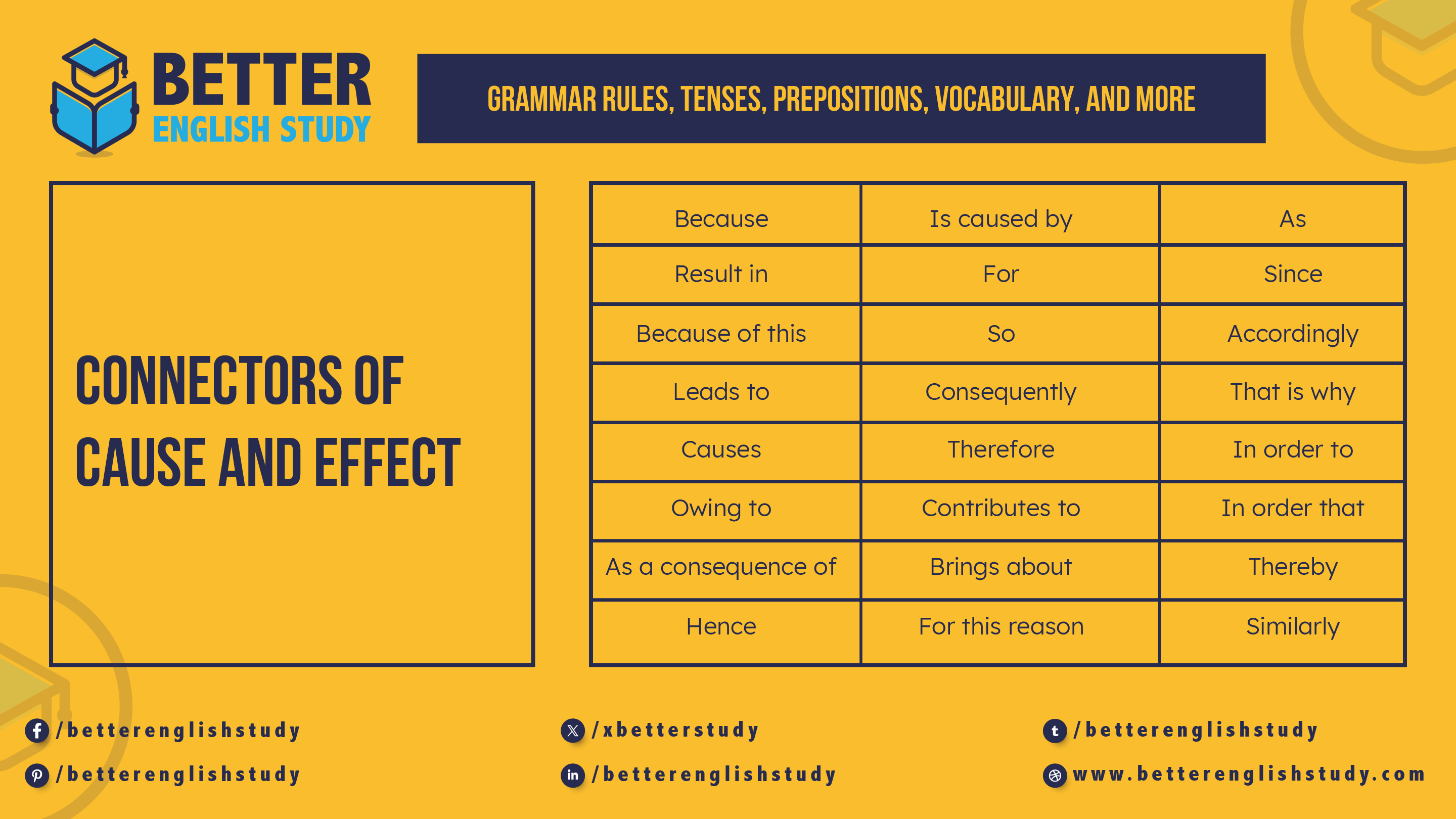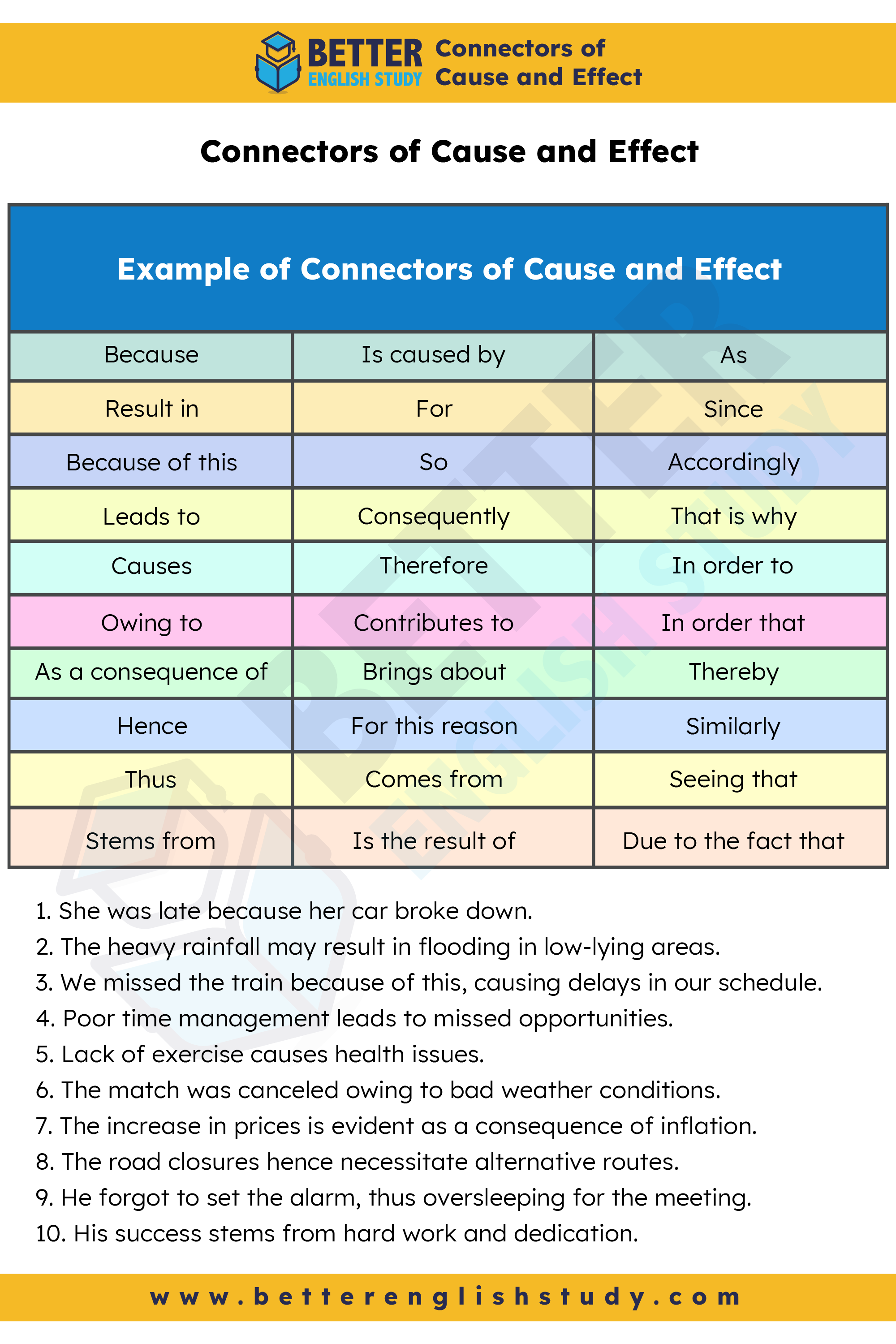
In the intricate tapestry of language, connectors serve as indispensable threads that weave together the fabric of coherent communication. Among these connectors, those expressing cause and effect play a vital role in illuminating the relationships between actions and consequences.
This article aims to explore the essence of connectors of cause and effect, shedding light on their various forms and providing illustrative examples that showcase their application in English.
What are the Connectors of Cause and Effect
Connectors of cause and effect are linguistic devices that articulate the relationships between actions, events, or circumstances and their resultant outcomes. These connectors serve to elucidate the cause-and-effect dynamics inherent in various situations, enabling effective communication of the reasons behind events and the ensuing consequences.
Examples of Connectors of Cause and Effect in English
| Because | Is caused by | As |
| Result in | For | Since |
| Because of this | So | Accordingly |
| Leads to | Consequently | That is why |
| Causes | Therefore | In order to |
| Owing to | Contributes to | In order that |
| As a consequence of | Brings about | Thereby |
| Hence | For this reason | Similarly |
| Thus | Comes from | Seeing that |
| Stems from | Is the result of | Due to the fact that |
| Is due to | Due to | On account of |
Connectors of Cause and Effect Examples in Context
- She was late because her car broke down.
- The heavy rainfall may result in flooding in low-lying areas.
- We missed the train because of this, causing delays in our schedule.
- Poor time management leads to missed opportunities.
- Lack of exercise causes health issues.
- The match was canceled owing to bad weather conditions.
- The increase in prices is evident as a consequence of inflation.
- The road closures hence necessitate alternative routes.
- He forgot to set the alarm, thus oversleeping for the meeting.
- His success stems from hard work and dedication.
- The flight delays are due to technical issues.
- The accident is caused by distracted driving.
- She went to the store, for she needed groceries.
- It rained heavily, so we decided to stay indoors.
- The market fluctuations consequently affected our investments.
- The project faced setbacks; therefore, its completion was delayed.
- Regular exercise contributes to overall well-being.
- Effective communication brings about successful collaboration.
- The exam is challenging, for this reason, students are advised to prepare thoroughly.
- The aroma comes from the freshly baked bread.
- The economic downturn is the result of various global factors.
- The cancellation of the event is due to unforeseen circumstances.
- The accident occurred due to slippery road conditions.
- She left early as she had an important appointment.
- The tradition continues since it holds cultural significance.
- The company expanded its services, accordingly, to meet growing demands.
- The instructions were unclear, that is why mistakes were made.
- He worked diligently in order to secure a promotion.
- She saved money diligently in order that she could travel extensively.
- The new policy thereby aims to address environmental concerns.
- The team adapted to changes, similarly, to stay competitive.
- The data supports the claim, seeing that it aligns with previous research.
- The project faced delays due to the fact that key team members were unavailable.
- The success of the venture is evident on account of meticulous planning.

Connectors of cause and effect provide linguistic tools to articulate the reasons and consequences that underlie various situations, contributing to the precision and clarity of communication in English. Incorporating these Connectors into writing and speech enhances the ability to express relationships and elucidate the dynamics of cause-and-effect scenarios.
